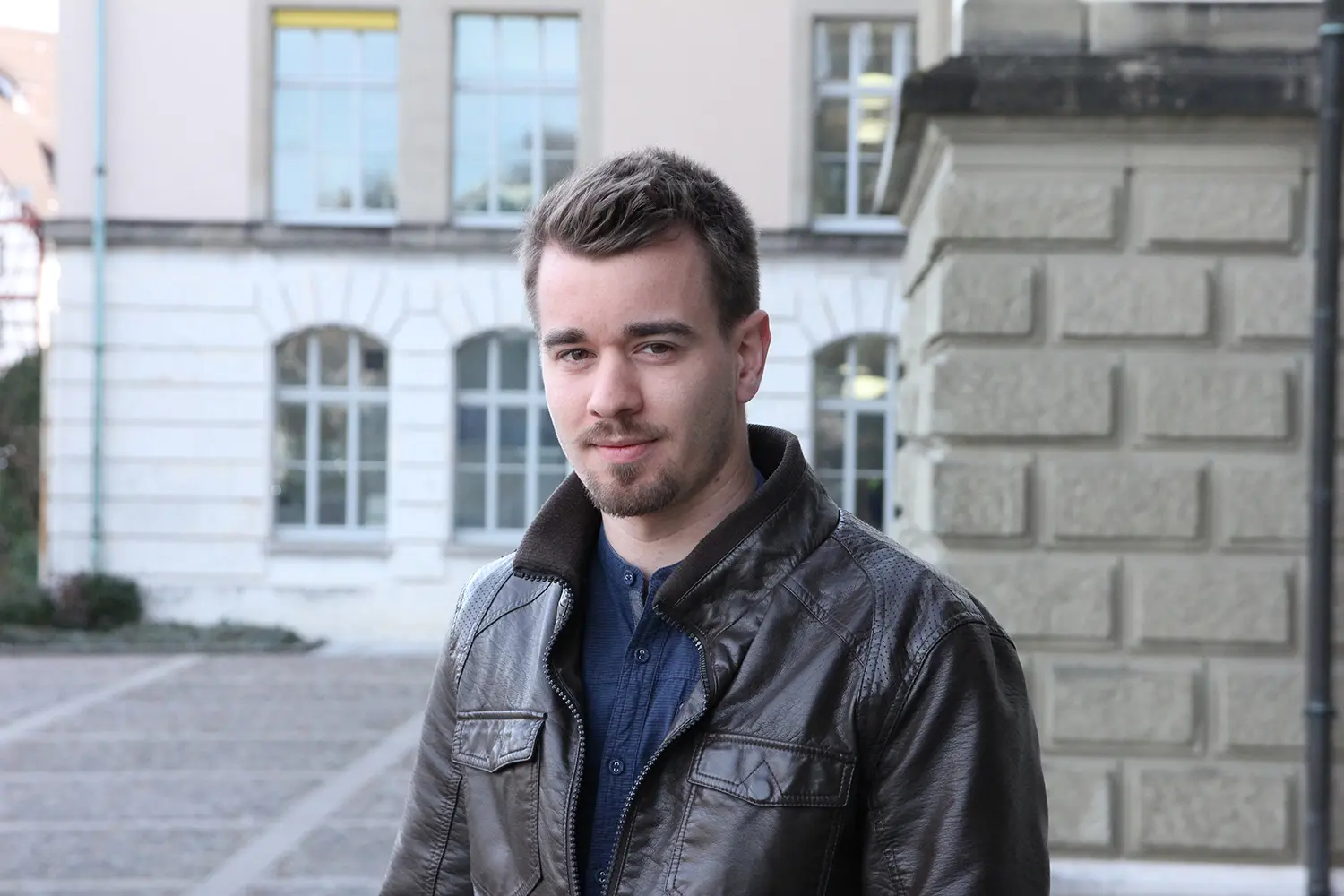Graduate portrait: Microlino project leader
ZHAW graduate presents new car at motor show
Pascal Studerus studied Mechanical Engineering at the ZHAW School of Engineering. Less than a year after graduating, he had already spent several months in China, where he managed the team that built the prototype for a new micro car which was unveiled at the Geneva Motor Show. His success story began with the bachelor degree thesis he wrote during his studies at the ZHAW.
“Bubble car” was the affectionate nickname given to the BMW Isetta, which achieved cult status in the 1950s and 1960s. For a car to attract that kind of following today, unconventional design alone no longer suffices. Sustainability is the key requirement. Pascal Studerus, a graduate in Mechanical Engineering from the ZHAW School of Engineering, is working to combine both attributes. He is managing the development project for the Microlino electric vehicle, an environmentally friendly micro car similar in design to the compact Isetta. Less than a year after graduating, Pascal Studerus has already spent several months in China managing production of the Microlino prototype.
“With an apprenticeship as a mechanic it takes a long time to work your way up. With a bachelor degree the opportunities for advancement are significantly better.”
From bachelor thesis to first professional position
Having begun work as an apprentice aviation mechanic, Pascal Studerus soon realised that he wanted greater freedom to shape his career. “With an apprenticeship as a mechanic it takes a long time to work your way up. With a bachelor degree the opportunities for advancement are significantly better.” He decided to study Mechanical Engineering, “because I think that is the subject covering the broadest range of disciplines. That is also demonstrated by the number of different industries and activities in which my former fellow students are now working.” It was while writing his bachelor thesis that Pascal Studerus first heard of the Microlino project. “After seeing an original Isetta re-engineered with an electric motor, my current boss commissioned three bachelor-degree thesis projects for new builds of a similar car.” A total of eight students in Mechanical Engineering and Systems Engineering took up the challenge. Pascal Studerus concentrated his efforts on the undercarriage of the car, including the power train and chassis. “My work seems to have met with approval. I was offered the post of project manager for the Microlino.”
From concept to prototype
Although he had not expected to receive such an offer, he had hoped that it might materialise. “The job did come with strings attached, however, including an extended assignment abroad.” Shortly after starting his new job, he travelled with his boss to China to get the Microlino project started. “The principal purpose of our trip was to present the Microlino vision, as a small, environmentally friendly vehicle designed for the car-hire market. This proved no easy task, given Chinese consumers’ current passion for ever-bigger, ever glitzier cars.” Despite this, the pair succeeded in persuading China’s second-largest electric-car manufacturer to enter into a cooperation agreement with them. Pascal Studerus was able to start construction of the Microlino prototype, a task he now carries out without any direct on-site support from his boss, but with a team of some 15 Chinese specialists. No components from existing vehicles have been used. The completed prototype is built exclusively from parts made specifically for the Microlino.
“After seeing an original Isetta re-engineered with an electric motor, my current boss commissioned three bachelor-degree thesis projects for new builds of a similar car.”
From prototype to production model
Communication with the Chinese specialists proved quite a challenge. As Pascal Studerus explains, “I speak no Chinese and my Chinese colleagues speak neither German nor English. We did have an interpreter, but she was not an engineer and found the technical terminology difficult to handle.” Despite these communication problems, the team succeeded in constructing a completely functional vehicle. Now Pascal Studerus is working on getting the Microlino ready for mass production. “We need to determine what investments will be needed to bring the Microlino to market, initially in Asia, but subsequently also in Europe or South America.” The project leader is confident in the car he has developed. True to the maxim that “The future is simple,” the Microlino is not only small and economical, but also has a simple design devoid of gimmicks. In future, it should thus be possible to have it manufactured at several decentralised sites worldwide. “That would also make the car even more environmentally friendly, as it would reduce the amount of grey energy used for shipping,” Pascal Studerus explains.
From China to Geneva
Once it had been shipped to Switzerland, Pascal Studerus presented the Microlino prototype on a number of occasions, most notably at the Geneva Motor Show, where it shared the stage with a number of other e-mobility prototypes. Irrespective of the Microlino’s future development and the public acceptance it gains, Pascal Studerus remains firmly convinced that micro mobility is a viable idea. As he puts it, “It’s not just a question of fun, leisure and enjoyment. Cars are genuinely useful, be it for people who are in a hurry, those with impaired mobility or children on their way to school.” Developing as many products as possible from initial idea to market launch is one of the goals he would like to achieve during his career. His fundamental knowledge of product development, materials and process technology and the understanding of economic efficiency he gained from his studies at the ZHAW School of Engineering will help him to achieve that objective.

